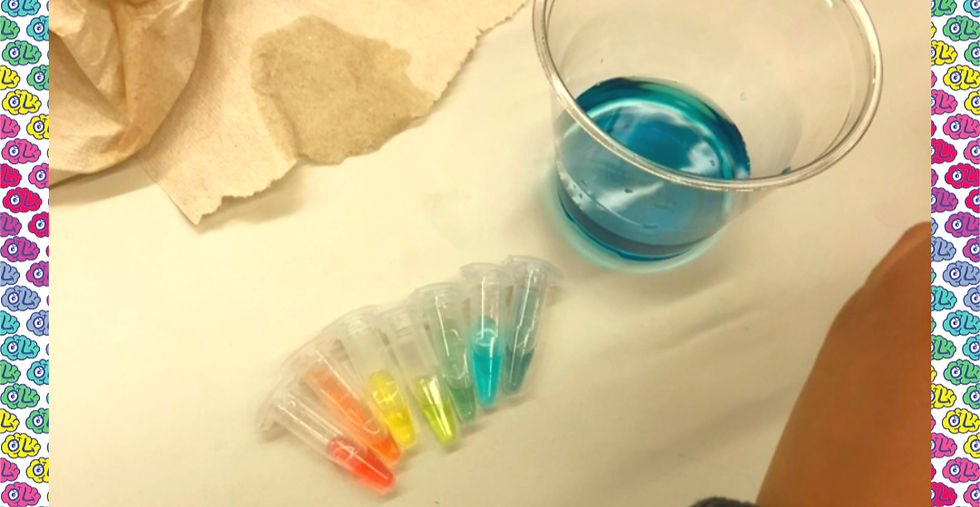From Gourd to Grave
- Dom Basilone
- Oct 10
- 4 min read
Fall is the perfect season for picking pumpkins. After a long summer of growing, members of the Cucurbita genus (like pumpkins, squashes, and gourds) are finally ready to be harvested. Once picked, they’re brought home to be carved, eaten, or used as festive fall decorations.
But what happens to pumpkins and gourds after the fall fun is over?

Pumpkin Decomposition!
If you’ve ever carved a pumpkin, you probably know that after a few weeks it starts to get soft, squishy, and might even change colors. That’s a sign your pumpkin is going through a process called decomposition.
Decomposition happens when tiny organisms called decomposers, like fungi, mold, and bacteria, begin to break down dead things into simpler materials. This process happens faster when a dead organism is exposed to oxygen and moisture, which is why a carved pumpkin outside rots more quickly than a whole pumpkin kept indoors.
Decomposition is a very important part of any ecosystem. It recycles nutrients from dead plants and animals back into the soil. Then, plants can use those nutrients to grow, produce fruit like pumpkins, and the cycle begins all over again.
But here's a problem—nearly 1.2 billion pounds of pumpkins are thrown away each year in the U.S.— that’s about half of all the pumpkins grown! Most of these pumpkins end up in landfills, where they’re buried under layers of trash.

When there’s not enough air, pumpkins break down slowly through a process called anaerobic decomposition (“an-” means without, and “aerobic” means related to air or oxygen). This process creates biogas, which contains the greenhouse gases methane and carbon dioxide. These gases can harm the environment by trapping heat in Earth’s atmosphere.
While biogas can sometimes be used as an alternative energy source, there are better, more eco-friendly ways to deal with organic matter like pumpkins. Throwing them in the trash doesn’t have to be the only option!
Keep reading for some fun and sustainable ways to say goodbye to your pumpkins at the end of fall.
Pumpkin in a Pumpkin
The nutrients released by decomposition can be used to feed a growing seed. With just a little soil, you can plant seeds from your pumpkin directly inside it and watch them grow! Here’s what you’ll need:

A small to medium pumpkin or gourd that hasn’t started to decompose (a whole, uncarved decorative pumpkin is best)
Pumpkin seeds (you can use seeds from the same pumpkin!)
A knife to cut the pumpkin
A spoon to scoop out the insides
A tray or shallow dish to catch water drainage
Potting mix (enough to fill your pumpkin about ¾ full—look for light soil with perlite for good drainage)
Once you've gathered all of your supplies, here’s what you'll do:
With help from an adult, carefully cut the top off your pumpkin. Use a spoon to scoop out all the seeds and pulp inside.
Using a drill or an apple corer, create 3 to 5 small holes in the bottom of the pumpkin. These will help excess water drain out.
Separate the seeds from the pulp and rinse them in clean water. Lay the seeds on a paper towel and let them dry for about a day to prevent mold.
Once your pumpkin is ready, fill it about ¾ of the way with a potting mix. Make sure the soil is loose and well-draining.
Plant the dried seeds about 1 inch deep into the soil. Cover them gently and water generously.
Watch Them Grow! Place your pumpkin on a tray in a sunny spot and water as needed. In about a week, you should see your seeds begin to sprout.
Once the sprouts have grown their first set of adult leaves, you can transplant the sprouts into a larger pot with more soil. Your decaying pumpkin can be broken into small pieces and frozen for composting. In spring, transfer the mature plant outside and watch it grow into a new pumpkin!
By the end of summer you could have a new whole pumpkin and start the process all over again!
Smash Your Pumpkin (into Compost)!
Don’t have a green thumb? No problem. If you're not up for planting but don’t want your pumpkin’s nutrients to go to waste, turn it into compost instead. If you live in NYC, check out the Hudson River Park’s Annual Pumpkin Smash. Bring your own pumpkin to this family friendly event and smash it into nutrient rich fertilizer for local gardens.
Classroom Friendly Alternative: Pumpkin in a Jar!

It's just what it sounds like, put a pumpkin in a jar and seal it up! Students can watch it decompose over the winter. The jar contains the smell and students see the process in real time. Download a student observation doc down below!
From Gourd to Grave Worksheet
Click below for a free PDF containing a single-page Gourd to Grave reading with a student worksheet on the back!



Comments